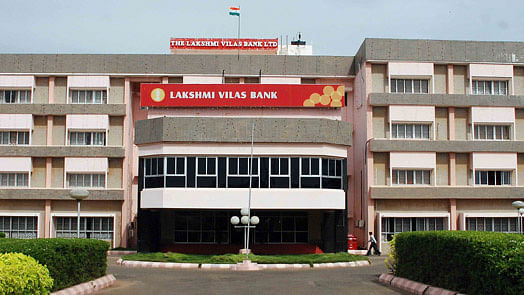Another Indian bank has failed, the third collapse of a major deposit-taking institution in 15 months and the first since the onset of the coronavirus pandemic. But instead of allowing a zombie lender to linger after a half-baked rescue, the central bank has wisely decided to put Lakshmi Vilas Bank Ltd. out of its misery. Better still, it’s called upon a foreign institution to take over the assets and liabilities. That should stoke interest of other global banks.
The moth-eaten LVB will cease to exist, its equity completely wiped out. Only its deposits will appear on the books of the India unit of DBS Group Holdings Ltd., Singapore’s biggest bank. This is a much cleaner solution than how the Reserve Bank of India handled the implosion last September of Punjab & Maharashtra Co-operative Bank Ltd., whose loan book was basically tied to one bankrupt shantytown developer. The scam-tainted lender is trying to sell itself, though it’s unclear why anyone would touch it with a barge pole. More than a year later, larger PMC depositors still remain trapped, under orders from the RBI.
The refusal to give a decent burial to a failed institution was visible in the messy bailout of Yes Bank Ltd. in March. Without wiping out the existing equity, authorities permanently wrote down $1.2 billion of Yes Bank’s liabilities, the first complete loss imposed by any country on Additional Tier 1 bondholders. They then leaned on government-controlled State Bank of India to inject some more capital. Once a major corporate lender, Yes was destroyed from within by its previous management’s dubious underwriting. Whether it has finally been saved may not be known before March 2022. Until then, Covid-19 has provided a convenient regulatory cover to delay recognizing stressed assets.
LVB was struggling to survive even before the March lockdown. The resulting dislocation dragged down the Tier 1 capital ratio to minus 1.83%, putting the lender beyond redemption. By swallowing assets and liabilities of the 94-year-lender, DBS gets 563 branches, 974 ATMs and a $1.6 billion franchise in retail liabilities.
The Singapore institution was the second foreign bank after SBM Group of Mauritius to turn its India operations into a wholly owned subsidiary. Yet, DBS Bank India Ltd. hasn’t really expanded outside major metropolises. LVB will help it penetrate deeper into the more industrialized southern state of Tamil Nadu, where Singapore’s ethnic Indian minority has an ancestral connection. Faster growth in the country could even open up the possibility of a stock-market listing in Mumbai for the India subsidiary, says Bloomberg Intelligence analyst Diksha Gera.
Also read: Yet another private lender in crisis, but a rescue mission is on track at Lakshmi Vilas Bank
The deal nixes speculation that the RBI might turn to the state-run Punjab National Bank to rescue LVB if it couldn’t find an acceptable rescuer on its own. Punjab National, allegedly taken for a $2.1 billion fake loan-guarantee ride by an uncle-nephew jeweler duo, is hardly the picture of operational strength and financial vitality depositors want to see in a white knight.
To that extent, the RBI’s decision to broaden the search beyond a “national team” is a good sign. It shows that the regulator wants control of banking assets to be in strong hands. If they incorporate locally, overseas institutions will be considered at (almost) par with homegrown ones.
DBS’s rivals like Standard Chartered Plc, Citigroup Inc. and HSBC Holdings Plc have deeper India ties and bigger branch networks. But their interest in establishing local subsidiaries never perked up because of the stipulation that 25% of new branches in any year should be in unbanked rural areas. However, now that DBS is getting to build scale in India’s capital-starved banking system via an amalgamation blessed by the regulator, there may be similar opportunities in store for others, particularly HSBC.
The British bank needs to cut its excessive reliance on the Hong Kong market, where it’s caught in the middle of a financial cold war between China and the U.S. DBS Chief Executive Officer Piyush Gupta has put the balance sheet of the bank’s Indian unit to use and promised to bring in an extra $336 million in capital. Noel Quinn, his counterpart at HSBC, should take time off from his cost-cutting agenda and weigh the opportunity. LVB was just a small private-sector bank, but the Indian government also wants to consolidate its 12 state-run lenders into four. There could be an M&A prize for becoming Indian.- Bloomberg
Also read: How RBI moved quickly to save Lakshmi Vilas Bank, and why it chose Singapore’s DBS for merger







One may criticize and curse government owned banks, but out of the three banks that have failed, two belong to private sector and the third one to the cooperative banking sector.